Plant cultivation techniques
In the contemporary society with developed material and spirit, are there many people who cultivate their sentiments by growing flowers? Today, the editor will introduce the cultivation techniques to you.
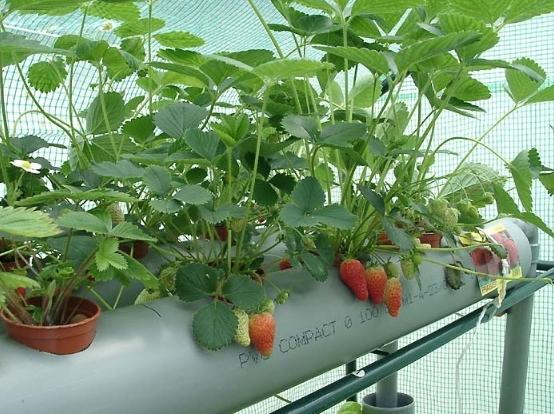
Definition of cultivation techniques
Plant cultivation technology is an application technology which focuses on practical operation skills by applying the basic theory of plant cultivation to the cultivation experiments of fruit trees, vegetables and ornamental plants.
The following editor will introduce the cultivation techniques of Pinus tabulaeformis.
Choose neutral (pH6.5--7.0) sandy loam or loam with flat terrain, convenient irrigation, good drainage, deep and fertile soil layer as nursery land. The former crops such as Pinus tabulaeformis, oak, poplar, willow, Amorpha and other coniferous species should be selected as nursery land, and the newly reclaimed wasteland can also be used to raise seedlings, so as to avoid raising seedlings on previous crops such as Robinia pseudoacacia, elm, Junqianzi and vegetable stubble such as cabbage and potato.
Land preparation
The soil must be prepared before fertilizing and raising seedlings. Nursery soil preparation in autumn is suitable for deep ploughing, depth in 20cm--30cm, do not rake after deep ploughing. After the soil was thawed in the spring of the following year, 40000kg--50000kg, green manure, barnyard manure and other mature organic manure were applied per hectare, and calcium superphosphate 300kg--375kg was applied. Shallow ploughing again, depth in 15cm--20cm, then rake flat.
Make a bed
3d--5d is filled with enough bottom water before making the bed, and the nursery is made into a bed after leveling.
Flat bed
Flat beds are generally used. Nursery bed width 1m--1.2m, drainage and irrigation ditches and trails on both sides, footpath width 30cm--40cm, seedbed length determined according to nursery conditions.
High bed
High beds can be used in nurseries with humid climate or irrigation conditions. The nursery bed is higher than the trail 15cm--20cm, the bed width is 30cm--100cm, and the seedbed length is determined according to the nursery condition.
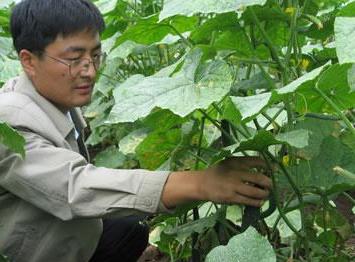
Low bed
Low bed can be used to raise seedlings in the nursery with drought and little rain and poor irrigation conditions. The bed surface is lower than the trail 15cm--20cm, and the rest is the same as the flat bed.
Soil disinfection should be carried out before sowing. The common agents and methods of soil disinfection can be found in Appendix A (normative appendix). Before sowing, the seed quality indexes such as purity, germination rate and water content were determined according to GB2772-1999 "Forest seed testing rules", and the seed quality grade was evaluated to provide a basis for determining the reasonable sowing rate.
Quality requirement
Seed quality should meet the requirements of GB7908-1999 "Forest seed quality Classification" standard.
Potassium permanganate disinfection
The seeds were soaked in 0.5% potassium permanganate solution for 2 hours, washed with clean water and dried in the shade. 6.2.2 seed germination was accelerated by seed invasion with warm water. Before sowing, the 4d--5d was used to invade the seeds with warm water at the initial temperature of 45 °C and 60 °C, and the volume ratio of seeds to water was about 1:3. Keep stirring when soaking the seeds, so that the seeds are heated evenly, and soak for 24 hours after natural cooling. After the seed coat is swollen by water absorption, the seed coat is removed and germinated under the condition of 20 °C muri 25 °C. In the process of sprouting, it is often checked to prevent mildew. Rinse with clean water once a day. When there is a crack in the mouth of the seed, it can be sown.
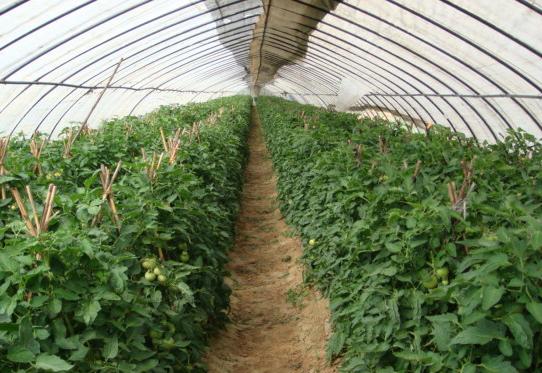
Sowing seeds
Sowing time: generally in late March to early and mid-April, timely early sowing.
Sowing rate: according to the seed quality grade, pre-yield and other factors, sowing rate per hectare 225kg--300kg.
Sowing method: 7.3.1 trench, ditch strip sowing is appropriate, ditch end should be straight, ditch bottom flat. Ditch depth 1.0cm--1.5cm, ditch width 5cm--7cm, ditch spacing 15cm--20cm.
Sowing: sow the seeds evenly at the bottom of the bed with a seeder, or sow by hand and sow evenly. Sowing depth 1.0cm--1.5cm.
Soil cover suppression: the thickness of soil cover is 1.0cm--1.5cm, the thickness should be consistent, and it should be suppressed after covering soil.
Other technical measures: conditional nurseries can spray heating agents or film mulching to keep moisture on the bed.
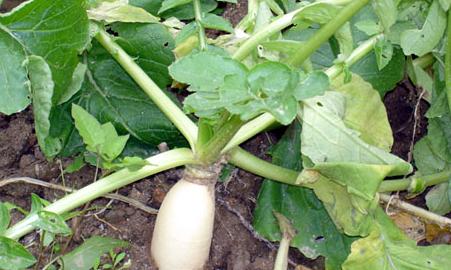
The following editor is introducing the cultivation techniques of Taxus mairei.
Taxus is an evergreen tree with reddish-brown bark, shallow longitudinal lobes, slightly curved and sickle-shaped leaves, dark green leaves and two gray-green stomatal bands. Dioecious, seeds oblate-ovoid, globose solitary, flowering from March to April, seeds mature in November.
Taxus mairei is mostly cultivated by seeds. After the seeds are ripe in November, the fleshy seed coat is washed and dried, then buried in a shady dry place with wet sand, covered with plastic film and grass curtains. The seeds should be turned twice a month in summer and autumn, and the seeds can be sowed and raised at the beginning of March of the following year. The seedbed should choose a leeward and well-drained slightly acidic sandy soil, with a bed width of 1 meter, a ditch width of 40 meters, a high ridge from east to west, and steel plates 25 meters high and 4 meters thick on both sides of the ridge, with a depth of 10 meters. The bed soil requires deep ploughing and fine farming, and carbofuran is applied to control underground insect pests. A portion of vermiculite, river sand, peat and garden soil, and adding fungicides such as carbendazim or methyl thiophanate, were mixed into the steel plate, which was 3 to 5 meters higher than the middle of the side plate. Cover with plastic film and seal and fumigate for 3 to 5 days before sowing. The seeds are distributed evenly on the bed surface, and the sowing amount is about 200 seeds per square meter. after sowing, the seeds are slightly flattened with a plank, covered with mixed matrix soil 1 to 2 meters thick, and covered with grass curtains or plastic film to keep warm and moisturizing.
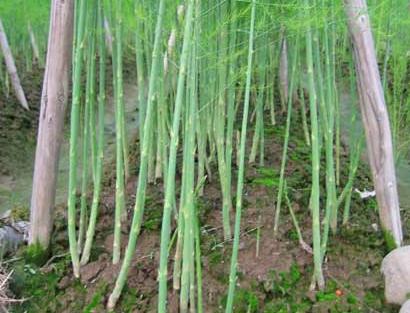
Spray water properly in case of dry weather, generally sprouting and sprouting after 40 days. At this time, we should remove the plastic film or grass curtain, and set up a 2-meter-high shade shed above the seedling bed to cover the shade net to prevent direct sunlight. Keep the seedbed moist, build a low arch shed and cover it with plastic film on rainy days to prevent too much moisture in the seedbed. Do a good job of drainage and ventilation of seedling bed, timely prevention and control of diseases and insect pests. Apply rotten fresh cake fertilizer and water every 10 days in the seedling stage, and avoid chemical fertilizer and concentrated fertilizer. After a year of careful maintenance and management, the height of seedlings can reach 15 to 25 meters and have 2 to 3 bifurcated branches. Transplantation can be carried out in early April. The planting land should choose leeward, dry, slightly acidic sandy soil rich in humus, turn 20 meters deep, and apply 5 kilograms of mature organic fertilizer per square meter. Raise high ridges and dig deep ditches, with a ridge width of 100 cm and a ditch width of 30 m. Five rows were planted in each ridge, with a row spacing of 20 cm and a plant spacing of 15 cm.
Transplant should be in cloudy days, should be moved with the species, need to transplant with soil balls. Immediately after transplanting, pour water once, and build a 2-meter-high shade shed on it, cover the shade net on sunny days, and remove it on rainy days and at night. Strengthen fertilizer and water management during the growing period, generally applying rotten cake fertilizer and water every 10 days. Do a good job in the control and management of diseases and insect pests. Strengthen shading and cooling in summer and spray water when necessary to create a cool and humid environment conducive to seedling growth. Taxus is not only a high-quality material for making high-grade furniture, but also a medicinal material with great medical value, but also an excellent tree species for landscaping. With the maturity and development of its artificial culture and cultivation technology, the application range of Taxus will be more extensive.
Cover with plastic film and seal and fumigate for 3 to 5 days before sowing. The seeds are distributed evenly on the bed surface, and the sowing amount is about 200 seeds per square meter. after sowing, the seeds are slightly flattened with a plank, covered with mixed matrix soil 1 to 2 meters thick, and covered with grass curtains or plastic film to keep warm and moisturizing.

Spray water properly in case of dry weather, generally sprouting and sprouting after 40 days. At this time, we should remove the plastic film or grass curtain, and set up a 2-meter-high shade shed above the seedling bed to cover the shade net to prevent direct sunlight. Keep the seedbed moist, build a low arch shed and cover it with plastic film on rainy days to prevent too much moisture in the seedbed. Do a good job of drainage and ventilation of seedling bed, timely prevention and control of diseases and insect pests. Apply rotten fresh cake fertilizer and water every 10 days in the seedling stage, and avoid chemical fertilizer and concentrated fertilizer. After a year of careful maintenance and management, the height of seedlings can reach 15 to 25 meters and have 2 to 3 bifurcated branches. Transplantation can be carried out in early April. The planting land should choose leeward, dry, slightly acidic sandy soil rich in humus, turn 20 meters deep, and apply 5 kilograms of mature organic fertilizer per square meter. Raise high ridges and dig deep ditches, with a ridge width of 100 cm and a ditch width of 30 m. Five rows were planted in each ridge, with a row spacing of 20 cm and a plant spacing of 15 cm.
Transplant should be in cloudy days, should be moved with the species, need to transplant with soil balls. Immediately after transplanting, pour water once, and build a 2-meter-high shade shed on it, cover the shade net on sunny days, and remove it on rainy days and at night. Strengthen fertilizer and water management during the growing period, generally applying rotten cake fertilizer and water every 10 days. Do a good job in the control and management of diseases and insect pests. Strengthen shading and cooling in summer and spray water when necessary to create a cool and humid environment conducive to seedling growth. Taxus is not only a high-quality material for making high-grade furniture, but also a medicinal material with great medical value, but also an excellent tree species for landscaping. With the maturity and development of its artificial culture and cultivation technology, the application range of Taxus will be more extensive.
Related
- Wuhan Hospital Iron Tree Blooming Result Was Instantly Frightened by the Gardener Master
- Which variety of camellia is the most fragrant and best? Which one do you like best?
- What is the small blue coat, the breeding methods and matters needing attention of the succulent plant
- Dormancy time and maintenance management of succulent plants during dormancy
- Minas succulent how to raise, Minas succulent plant pictures
- What are the varieties of winter succulent plants
- How to raise succulent plants in twelve rolls? let's take a look at some experience of breeding twelve rolls.
- Attention should be paid to water control for succulent plants during dormant period (winter and summer)
- Watering experience of twelve rolls of succulent plants
- Techniques for fertilizing succulent plants. An article will let you know how to fertilize succulent plants.



